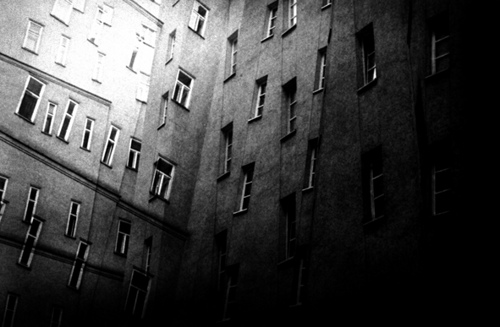
Eileen A. Joy
Department of English
Southern Illinois University Edwardsville
ejoy@siue.edu
http://www.siue.edu/~ejoy
“Touching the Past”
Inaugural Symposium of the George Washington University Medieval and Early
Modern Studies Institute
7 November 2008
Washington, DC
The Faded Silvery Imprints of the Bare Feet of Angels: Notes Toward an Historical Poethics

Eugenio Azzola, "Finestre de Bruno Schulz" (Austria, 1998)
*for Dan Remein
As I have pointed out before the design element in my paintings is the
shape of love. I am wanting & hoping for a time when I can have my jaws
reticulated so that I can swallow a human being whole without it having to
be misshaped in order to fit into my design, fit into my love scheme.
—Stanley Spencer, 27 July 1948
I. The Hope of a Certain Astonishment
In The Writing of History, Michel de Certeau describes Michelet’s historical method, and Western historiography more generally, as a “deposition” which turns the dead into
severed souls. It honors them with a ritual of which they have been deprived. It “bemoans” them by fulfilling the duty of filial piety enjoined upon Freud through a dream in which he saw written on the wall of a railway station, “Please close the eyes.” Michelet’s “tenderness” [for the “dead of the world”] seeks one after another of the dead in order to insert every one of them into time, “this omnipotent decorator of ruins: O Time beautifying of things!” The dear departed find a haven in the text because they can neither speak nor do harm anymore. The ghosts find access through writing on the condition that they remain forever silent.[1]
In Certeau’s view, Western historiography, even Michelet’s affective historiography, concerns itself with a “labor of separation” between the uncanny, dead Others and the historian’s fascination for proximity with these dead, and unlike Roland Barthes, who saw in Michelet’s writings a conception of history as “Love’s protest” and of the past as, “not a puzzle to reconstitute,” but as “a body to embrace,”[2] Certeau perceived a “division between the body of knowledge that utters a discourse and the mute body [of the dead] that nourishes it.”[3] And in the insistent chronologies of such a historiography there is “traced the decision to become different or no longer to be such as one had been up to that time” (and hence “periods,” such as the Middle Ages or modernity which inscribe “breaks” in time).[4] Unlike the “stratified stockpiling” and processes of “coexistence and reabsorption” that Louis Dumont has noted in Indian history,[5] Western historiography “takes for granted the fact that it has become impossible to believe in the presence of the dead that has organized (or organizes) the experience of entire civilizations; and the fact too that it is nonetheless impossible to ‘get over it,’ to accept the loss of a living solidarity with what is, or to confirm an irreducible limit.”[6]
While working to complete a book on the representation of traumatic history in art—in Beowulf, but also in the monumental paintings of Anselm Kiefer and Stanley Spencer, in Claude Lanzmann’s epic documentary Shoah and Daniel Libeskind’s Jewish Museum in Berlin, and in the novels of W.G. Sebald and Toni Morrison—I have been trying to see if I can illuminate some of the ways in which literature and the fine arts situate themselves within this division, or series of breaks, that Western historiography inscribes between past and present, between the mute dead and the rationalist historical discourses that consign them to what Certeau called “scriptural tombs,” and to also see if what Heidegger says is true, that
the truth that opens itself up in the artwork can never be substantiated or derived from what came before. What came before is, in its exclusive reality, contradicted by the work. That which art founds can therefore never be fully offset by what is present and available. Its founding is an excess, a giving.[7]
It is the idea of art’s founding as excess, as a giving, in particular, that interests me, and how, in Gerhard Richter’s formulation, writing on the artwork of Anselm Kiefer, the “historical specificity of an artwork [only] emerges in the moments when it can no longer be fully contained by history,” and what this means is that the artwork always “presents itself in the strange figure of a singularity that meets in unforeseeable ways with the generality of its historical and philosophical structure.”[8] I’m interested, further, in the ways in which, in the disjunctive materiality of a poem, or a painting, “the haunting image of history . . . is always in retreat, even as it ceaselessly calls upon us to revisit questions concerning the space within which memory, politics, and figuration intersect.”[9]
And yet, and perhaps more naively (or is it hopefully?), I would also like to see if it is possible to delineate a certain presencing that occurs in the artwork within which a new historicity might be articulated—a new historicity, moreover, that, in the words of Dan Remein, “might allow us to think of a thing which escapes the economies of historicism,” and which would offer to us “impossible hopes and wonders.” These wonders, Dan notes, “would never lose their historicity. They would always happen, in some sense, a relative sort of sense, in a time,” and any being “caught in the affective gravity of such a [temporal] density would still be always dying,” but with the hope of a certain astonishment.[10] And this is an astonishment, I would argue, borne from what Leo Bersani and Ulysse Dutoit have described as “unexpected couplings” in which we can glimpse the immanence of similitudes in every subject with other subjects (and other objects), the “visible traces of every body’s limitless extensibility in both space and time.”[11] And to delineate, or articulate, such presencings might require a return to considering what Susan Sontag argued for in her 1964 essay “Against Interpretation,” that what we need now, “in place of a hermeneutics” of art, are “acts of criticism which would supply a really . . . sharp, loving description of the appearance of a work of art”—in short, “an erotics of art.”[12]
This would also be a criticism that would attend to Bruno Schulz’s question to himself in his poetic autobiography, Sanatorium Under the Sign of the Hourglass: “What is a spring dusk?” As Schulz elaborated,
We are beginning to be at a loss for words: they become confused, meandering, and raving. And yet it is beyond these words that the description of the unbelievable, immense spring must begin. The miracle of dusk! Again, the power of our magic has failed and the dark element that cannot be embraced is roaring somewhere beyond it. Words are split into their components and dissolved, they return to their etymology, re-enter their depths and distant obscure roots. This process is to be taken literally. For it is getting dark, our words lose themselves among unclear associations: Acheron, Orcus, the Underworld . . . Do you feel darkness seeping out of these words, molehills crumbling, the smell of cellars, of graves slowly opening? What is a spring dusk?[13]
As to whether or not he would be able to capture what he called the “fullness” of the “wonders” of his own childhood, Schulz wrote that there are things that are
merely trying to occur, they are checking whether the ground of reality can carry them. . . . And if they break into their capital, lose a thing or two in their attempts at incarnation, then soon, jealously, they retrieve their possessions, call them in, reintegrate: as a result, white spots appear in our biography—scented stigmata, the faded silvery imprints of the bare feet of angels, scattered footmarks on our nights and days—while the fullness of life waxes, incessantly supplements itself, and towers over us in wonder after wonder.[14]
And yet, it is to these fragmentary and scattered footmarks that the writer and artist must draw attention because the fullness of life “is contained wholly and integrally in each of its crippled and fragmentary incarnations. This is the phenomenon of imagination and vicarious being.”[15] And I would say, too, that in engaging the historicity of the phenomenon of imagination and being—whether as artists or critics—we must resist, as Richter has cautioned, the pull of the arguments that the language of art is just an “ornamental aberration to be quickly translated into the terms of an empirical referent or assimilated into the presuppositions of a stable system.” There can be no realist or mimeticist presentations of a history whose “endless relations” could never be reduced to a literalist concern.[16]
The distressing question that I cannot entirely ignore, however, is whether or not my desire for a criticism that would attend to the historicity of certain non-rational movements of presencing—of the affective gravity of temporal densities—in the work of art participates, wittingly or unwittingly, in what is referred to as the theological wager—as George Steiner put it in his book Real Presences, this theological wager
predicates the presence of realness, of a ‘substantiation’ (the theological reach of the word is obvious) within language and form. It supposes a passage, beyond the fictive or the purely pragmatic, from meaning to meaningfulness. The conjecture is that “God” is, not because our grammar is outworn: but that grammar lives and generates words because there is the wager on God. Such a conjecture may, wherever it has been or is put forward, be wholly erroneous.[17]
But I would like to also suggest the possibility that, regardless of any wagers on God, the work of art may nevertheless hold open a space for, in Bersani’s terms, “a metaphysical sociability sympathetic to the beneficent madness of love.”[18]
II. What Was Falling & What Was Being Fallen On
The monumental Resurrection paintings of English painter Stanley Spencer (1891-1959), mainly completed in the 1920s through 1940s, stage, I really believe, a dazzling performance of a certain metaphysical sociability sympathetic to the beneficent madness of love, and of Spencer’s desire to, as he himself put it, “commit a kind of spiritual rape on every thing.”[19] Spencer’s art, and also his writings—which were voluminous (eighty-eight lengthy notebooks, thirteen diaries, and over 900 extensive pieces of writing, not counting all of his letters)—serve as a rare window on an unabashed and almost violent attempt to touch everything (past, present, and future) and to also love and “marry” everything. Spencer once wrote that
Every thing or person other than myself is a future potential part of myself, or a revealer of and an agent in revealing unknown parts of myself: unknown husbands, wives, lovers, worshippers, never before seen and only known by a persistent desire or passionate longing, supported by a kind of consciousness of their existence.[20]
This intense fervor, evident in all of his writings and letters, with which Spencer loved persons, living and dead, angels and apostles and saints, animals, flowers, old books, teacups, brooms, chairs, table legs, buckets, sponges, laundry, buttons, discarded rubbish, grass, and even the dirt, is profoundly moving, but also, unsettling in its voracious nature, as if revealing the truth of what Barthes once wrote about love as a “frightful intimacy,” a “radical chasm” or “wound” which “cannot be closed, and out of which the subject drains, constituting himself in this very draining.”[21] Indeed, in many of his letters and writings, Spencer articulated his desire to both completely empty himself out in his paintings and also his conviction that he could see himself in everything—objects, persons, landscapes—that surrounded him, and therefore he desired to swallow everything whole so that he could then reconstitute it in his work as a series of “joins.” In 1937, or 1938, in one of his notebooks, Spencer anticipated a day when his work would achieve a perfect “fusion,” a kind of “epithalamium of marriage between the personal thoughts emotions and desires and the visible appearance of things,” which would produce a “leaven which branches into each.” And in 1936, in another notebook, he wrote, “I become expressive only when I am able to establish my union, when I can indentify myself with something, because I can then extend, enlarge and add to my self . . . .”[22]
Spencer is a fascinating case as a so-called “modern” painter because in his student days at the Slade School of Art in London he referred to himself as a Neo-Primitivist and his idols were late medieval painters such as Giotto, Donatello, and Fra Angelico, whose treatment of the miraculous and sacred in their work consumed Spencer. Spencer was especially influenced by Ruskin’s assessment of Giotto’s art as having humanized his religious subjects by appropriating the “gestures of living men” and “incidents of everyday life” in his cycle of frescoes depicting the life and death of Christ at the Arena Chapel in Padua. Several of Spencer’s earliest paintings depict scenes from Jesus’s life and death that are set in his beloved hometown of Cookham and which include local figures, Spencer’s family members, and Spencer himself. So, for example, in The Betrayal (1923), which portrays Christ’s betrayal by Judas in the garden at Gethsemane, the scene is set behind the corrugated iron shed that once served as Spencer’s schoolhouse, and both Spencer and his brother Gilbert, depicted as young boys, are watching the scene from the top of the wall separating the school from the enclosed garden at Fernlea, Spencer’s boyhood home on High Street in Cookham. In Christ’s Entry into Jersusalem (1921), Christ rides his donkey on High Street with Cookham schoolgirls running ahead of him.
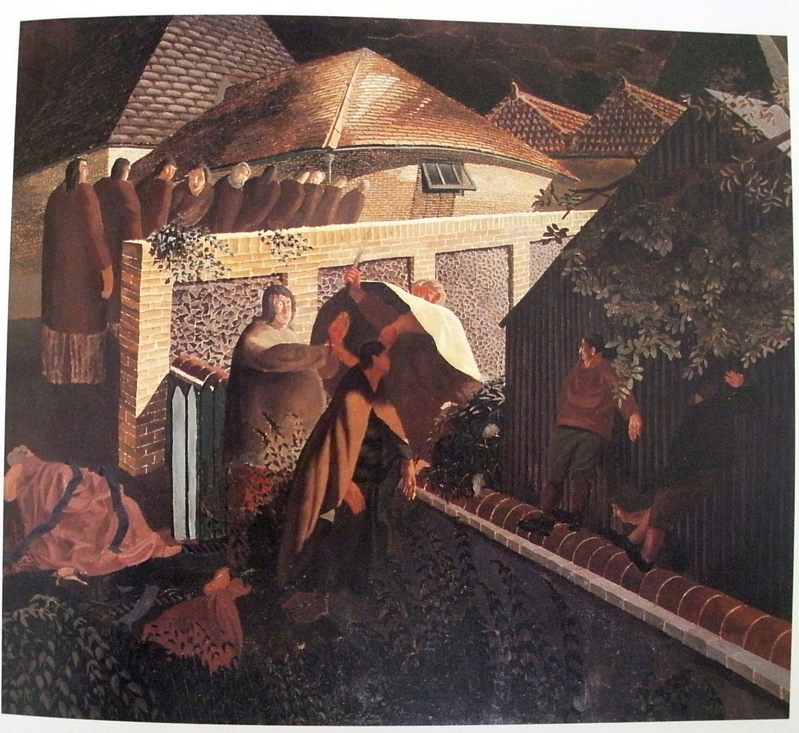
Figure 1. Stanley Spencer, The Betrayal (1923)
It is partly because Spencer so closely related himself and his work to the early Italian painters, especially to their works which were commissioned for churches and other public sites, and also because the themes of much of his work were spiritual and his mode so figurative, that Spencer’s reputation in his own lifetime suffered quite a bit (although he did have his moments as a "popular" painter). The painter Paul Nash once remarked that Spencer was “born behind his time,” and Wyndham Lewis ridiculed Spencer for his “naivety” and for the ways in which his work displayed the “oppressive archness of a self-conscious little girl” (a remark as insulting to Spencer as it is to little girls).[23] Even more damning, the year before Spencer’s death in 1959, Herbert Read wrote in his preface to A Concise History of Modern Painting,
I have excluded all ‘realistic’ painting . . . I do not deny the great accomplishment and permanent value of such painters as Edward Hopper, Christian Bérard, Balthus or Stanley Spencer (to make a random list); they certainly belong to the history of art in our time. But not to the style of painting that is specifically ‘modern.’[24]
Spencer’s reputation and acknowledged importance as a modern English painter has since been rehabilitated, but the question should not be whether or not Spencer was “behind his time” or in front of the modern, whether he was “medieval” (with all of its negative connotations of primitivism and religiosity) or radically new; somehow his work represents a type of active and affective co- or inter-habitation between past and present, the living and the dead, between a premodern sacred history and the domesticated topographies of the modern Cookham in which he set so many of his Passion, Resurrection, and other paintings.
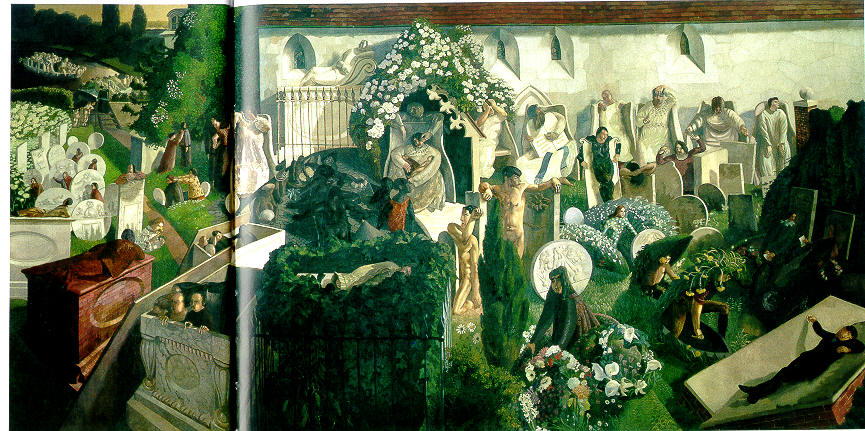
Figure 2. Stanley Spencer, The Resurrection: Cookham (1924-26)
From 1924 through 1926, Spencer worked on a monumental canvas, The Resurrection: Cookham, that would represent what would become an enduring obsession for Spencer: monumental Resurrection scenes. The Resurrection: Cookham (108 by 216 inches), inspired by Donne’s description of a churchyard in one of his sermons as a “holy suburb of Heaven,” is set in the Cookham churchyard and features several portraits of Spencer’s first wife Hilda, a nude study of Hilda’s brother, Richard Carline, and even several portraits of Spencer himself, the most prominent in the lower right-hand corner, where he is lying within the open crevice of two collapsing tombs that interlock, in Spencer’s words, “like the pages of a book. I love the pages of a book, an open book, and so I am where I love to be.”[25] Fusing the heavenly with the homely domestic, which was Spencer’s most fecund “primal scene” of artistic inspiration (he once wrote that he wished he could have been tied to his mother’s apron strings his entire life), Spencer depicted in one part of the canvas (on the left-hanbd side near the walkway leading to the river) wives brushing the earth off their husbands’ coats, adjusting their collars, and buttoning their coats because, as Spencer put it, “I remember at home my mother used always to give my father’s coat a ‘brush down’ before he left to go teaching.”[26] For Spencer, the Bible, Cookham, and himself were somehow fused together: “I could see the richness that underlies the Bible in Cookham in the hedges in the yew trees,”[27] he once wrote, and also, “The instinct of Moses to take his shoes off when he saw the burning bush was very similar to my feelings. I saw many burning bushes in Cookham.”[28] For Spencer, heaven manifested itself in his immediate surroundings and in the physical appearances of those surroundings and, in his own words, “the significance of anything comes out when two experiences are welded together as one experience.” Further,
This produces an apparent anachronism of an important nature because, if you reflect you will appreciate that one’s life changes continually from one incident to another and from one experience to another abruptly, and that these incidents, which sometimes change several times in a quarter of an hour, have as far as one can see nothing to do with each other. But there is a join between all these things and it is one of the most elusive and difficult things to see the joins between one thing and another. The putting together in pictures, as I do, of things which might be thought unlikely and anachronistic are in fact neither, and because of my understanding of these joins, their union is emphasized.[29]
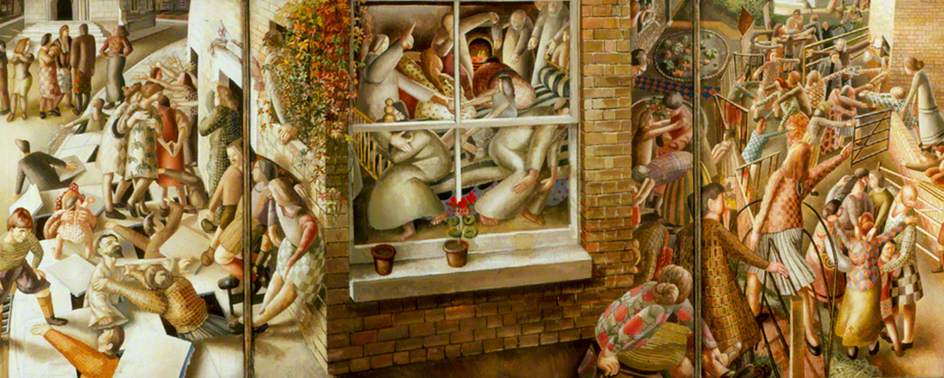
Figure 3. Stanley Spencer, The Resurrection with the Raising of Jarius's Daughter (1947)
Of a Resurrection painting he wanted to paint but never did, and in which animals and trees would resurrect alongside the humans (for an example of what this might have looked like, see Figure 4 above), Spencer wrote that he wished it would take place
anywhere on the street: out of the gutters a lady magnificently attired would push the lid off a manhole & step out, some would come up from under the drawing room carpet or the floor boards of the kitchen others would stroll out the side of a hill or emerge from a heap of wheat in a barn. . . . Some would come through the center of a billiard table or a committee room table & and the members of the committee would kneel & pray & assist. Children would sometimes resurrect among mushroom rings & among rubbish heaps & among clumps of Kingcups & among the shingle of shallow slow running streams or out of the bottom drawer of their chest of drawers.[30]
It should be noted that, although Spencer's paintings were all infused with a sort of eroto-religious mania, that he detested organized religion, and he also had some naively facile notions about the role of sexuality in Eastern religions, such as Buddhism and Hinduism; nevertheless, the life and death of Christ, as well as other Biblical “scenes,” had a powerful hold on his imagination.
Spencer’s most important work, undertaken between 1927 and 1932, is a sequence of monumental paintings commemorating World War I installed in a chapel in Burghclere, England (Sandham Memorial Chapel) specifically designed by Spencer (and financed by J.L. and Mary Behrend who dedicated the chapel to Mary’s brother who had died in 1919 from an illness he contracted during the War). Spencer himself served in the War from 1915 to 1918, first, as an orderly at the Beaufort War Hospital (in Bristol), and then as a soldier on the front lines in Macedonia, and he decided to situate the majority of his narrative of the war in the “daily round of domestic happenings.” His war is one in which “the violence is understated,” partly because he wanted to represent the spirit of St Augustine’s God who is “very busy yet ever at rest, gathering yet never needing; bearing; filling; guarding; creating; nourishing; perfecting.”[31] And so we have soldiers reading maps and filling water bottles, making beds and tea, spreading jam on toast, dressing and shaving, feeding the horses and mules, scrubbing floors, waking up and stretching under mosquito nets, and scraping frostbite off of each other’s feet. We can see in this cycle of paintings the emphasis, so important in so much of Spencer’s work, on physical touching and the caress of everything: objects, persons, animals, and anything that makes up the physical landscape.
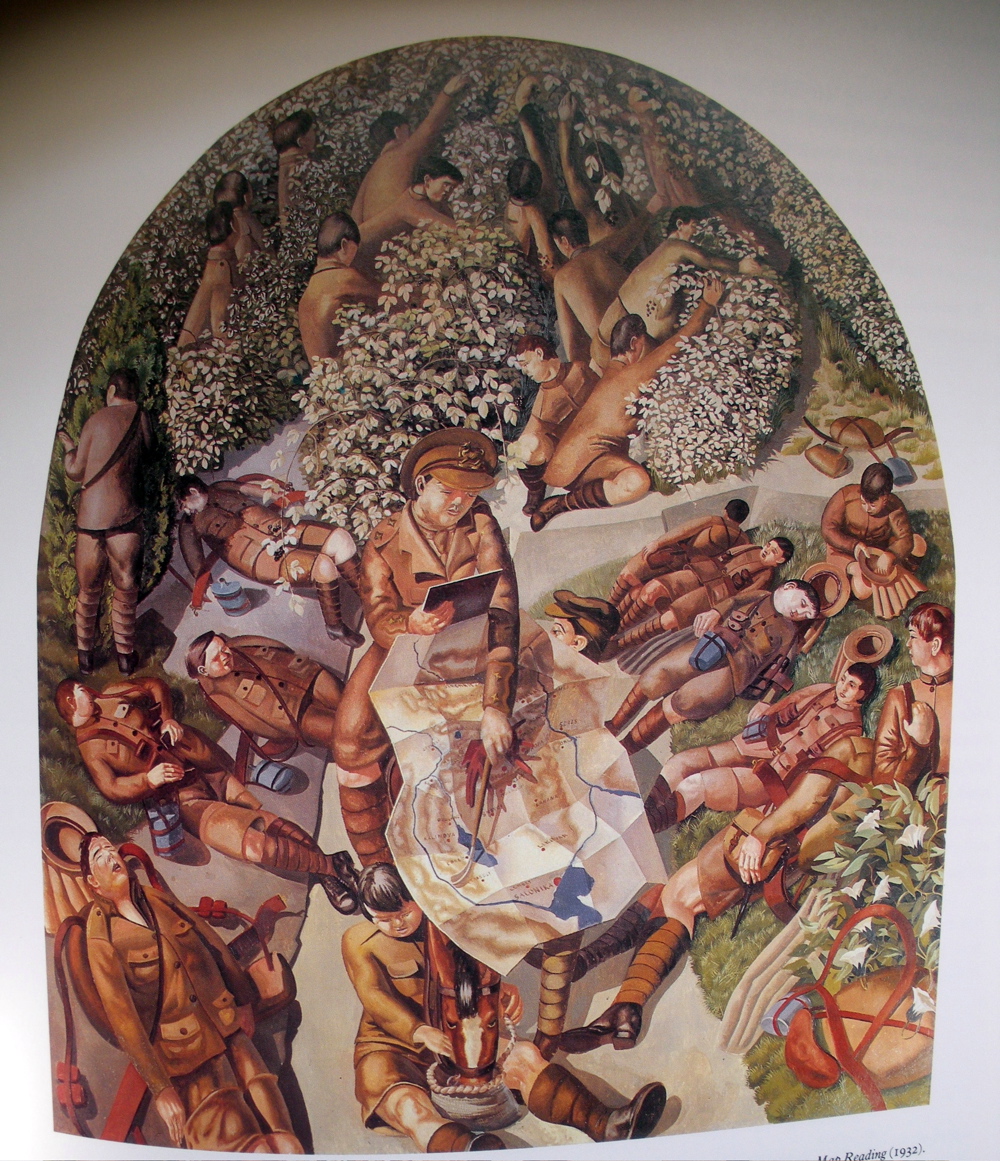

Figures 4 &5. Stanley Spencer, Map Reading and Ablution
Therefore, in Map Reading, the men are caressing and embracing the flower shrubs and in Ablution, one soldier is drying another’s back while resting his cheek on his shoulder blades, while another man, who is washing his hair behind them, also seems to be pressed up against the two drying and being dried. Indeed, in this scene of washing, all of the figures are, in some sense, touching all of the other figures. According to Fiona McCarthy, the cosiness of these scenes is partly superficial because its “unlikeliness” arises from the context: “These are people, and actions, wrenched out of domesticity into a world of inhuman confrontations, in a trans-European war more mechanistic and brutally destructive than any war before.”[32]
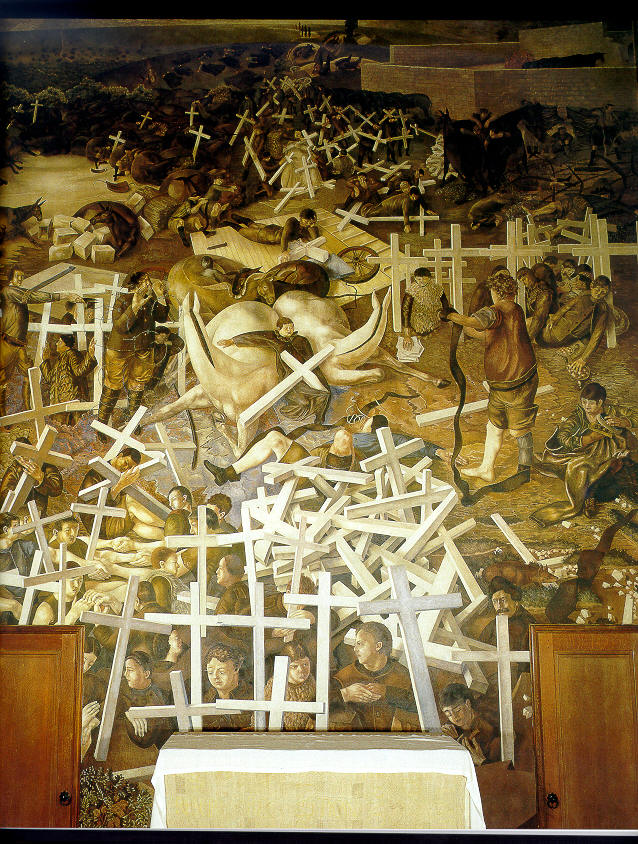
Figure 6. Stanley Spencer, The Resurrection of the Soldiers
But what dominates the entire sequence is the central composition that covers the whole east wall of the Chapel, The Resurrection of the Soldiers. The painting shows the soldiers climbing out of their graves bearing white crosses and reuniting with their dead comrades in all manner of embrace. The men are touching everything and also clasping each other—some men are lying close to the mules, one man kneels at Christ’s side, his head in his lap, one man caresses a turtle, while another clasps a dove to his chest. At the horizon, the chalky hills of the Macedonian landscape give way on the left-hand side to the green hills of Spencer’s Cookham. Of the painting, Spencer wrote, “During the war, I felt the only way to end the ghastly experience would be if everyone suddenly decided to indulge in every degree or form of sexual love, carnal love, bestiality, anything you like to call it. These are the joyful inheritances of mankind.”[33]
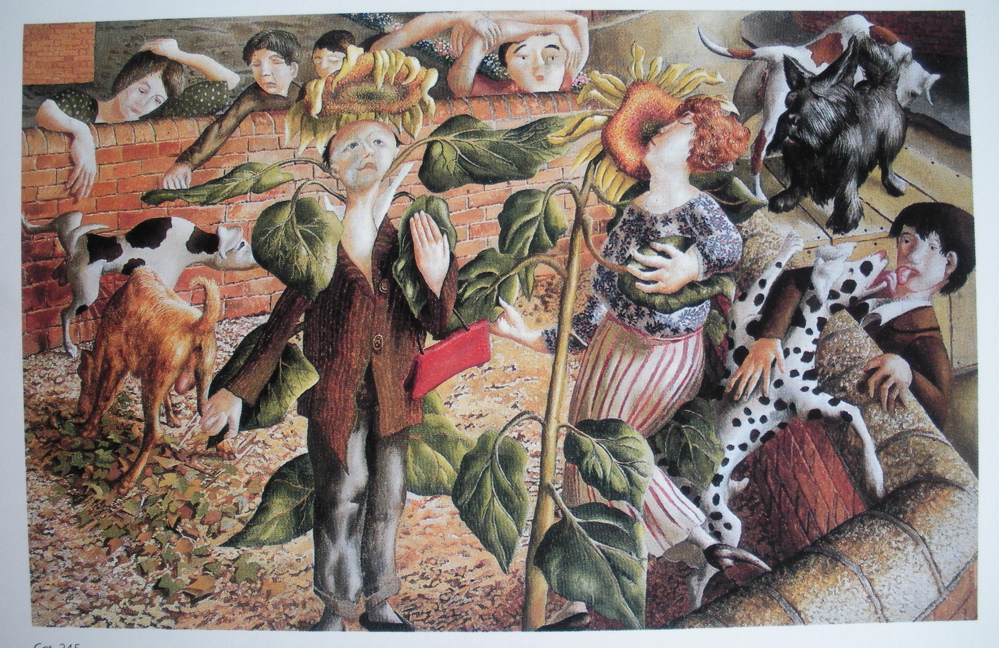
Figure 7. Stanley Spencer, Sunflower and Dog Worship (1937)
In the late 1930s and through the 1940s, Spencer would embark on a never-to-be-fully-realized “Church-House” of love and peace which would feature a cycle of paintings that would completely fuse the sacred with the domestic and whose architecture would be a mirror of the topography of Cookham—the nave would be High Street, the aisles as School Lane and the river, and there would even be secondary structures that would include bedroom chapels and even lavatory chapels, and one of the central images was to be a scene of public love-making at the site of the Cookham War Memorial. One of the paintings completed for this cycle (see above) was Sunflower and Dog Worship, in which Spencer depicted himself kissing a Dalmatian dog and Hilda being embraced by a giant sunflower.
According to Fiona McCarthy, The Resurrection of the Soldiers is an “enormous, highly detailed and ineffably strange painting [that] sees the twentieth century in terms of the epic, the miraculous, the culmination of long arduous spiritual journeyings,” and Spencer is a “modern artist who believed that true modernity necessitated reclamation of the past.”[34] But I would say that, for Spencer, this was not necessarily a project of reclamation of the past, but rather, of revealing—of making present—certain moments of being caught, and held, within a certain “affective gravity” of time, a historicity that exceeds our usual temporal schema, and if anything, Spencer’s art tilts at what I would call “virtual time.” It engages in what Deleuze called the “crystallization of time, where the actual and virtual coincide,” and touch, which is so important in all of Spencer’s paintings, occurs, in Erin Manning’s words, “at the intersection of the prism, creating a relation that is actual while flirting with the future anterior, the ‘will have come’.” Even more importantly, the “incorporeal”—which, for Spencer, would have been the sacred or the divine but only as it could express itself in bodies and other physical appearances—“is like a smudge that emanates from [the] body's potential movement. The smudge exfoliates in all directions, leaving traces of the potential of the animated body as it moves from here to there, from now to the not-yet, from the after to the before of the will-have-come.”[35] In this sense, Spencer’s art also participates in thinking the love of the world as a making possible which, in the words of the philosopher of infinitude, Thomas Carlson, keeps open “the possibility of birth, which like the possibility of death is one with which we are never done, one never wholly actualized, and thus one that escapes the logic of calculation and management, production, and control.”[36] Time, in Spencer’s art, is thus completely open and cannot be exhausted by any objective actuality of all that was, is, or could be.
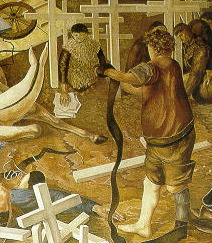
And here I want to note yet another scene of touch, which is related to our work as medievalists, again from Spencer’s The Resurrection of the Soliders: the soldier who is kneeling and caressing the letters, the pages of writing that lie on the ground in front of him (see above). I do not have enough time to relate Spencer’s complicated love life, but suffice to say that he loved his first wife, Hilda Carline, so much, that even though he divorced her in the early 1930s in order to marry the painter Patricia Preece (a disastrous union, I might add, partly because Preece was a lesbian and did not really love Spencer but desperately needed the financial security he could provide her), Spencer continued writing letters to Hilda, even after she died of cancer in 1950, and some of these letters are over 200 pages long (one is over 300 pages long), and all of us here today now are writing these letters to the dead all the time—we are consummate letter writers.
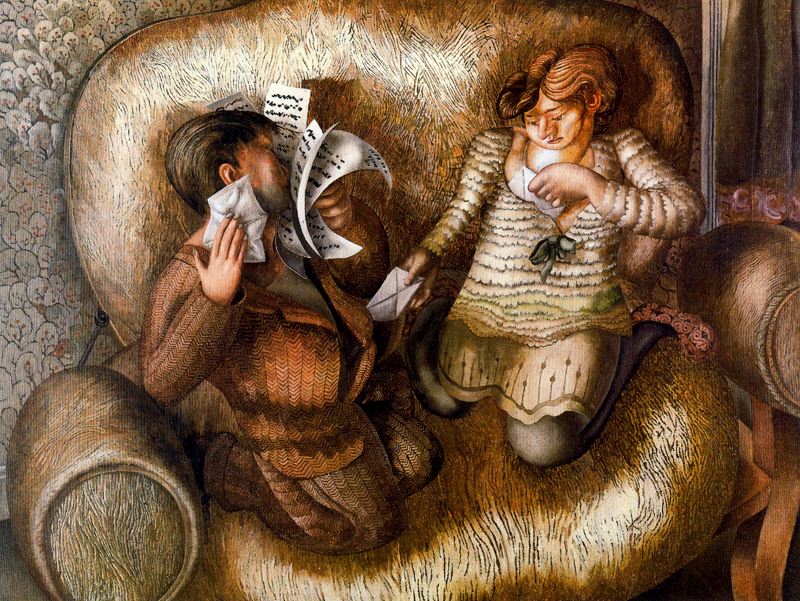
Figure 8. Stanley Spencer, Love Letters (1950)
When Hilda was still alive, sometimes she and Stanley would sit together long into the evenings writing letters to each other, and one of Spencer’s later paintings, Love Letters (completed in 1950, just before Hilda died, and planned to be the central altar-piece in the Hilda Chapel of his “Church-House”), Spencer depicts himself and Hilda as children, sitting on a overstuffed chair, and passing letters back and forth. Spencer is kissing the words on the pages of Hilda’s letters, his eyes closed, as Hilda withdraws even more letters from under her clothing. In 1941, when they were divorced and emotionally estranged and Spencer was trying to reconcile with Hilda, he wrote to her, “Each wish to write to you gives birth to another wish to write to you . . . You would have found my letter supply more reliable than your water supply.” And in 1957, when Hilda had been dead for seven years, Spencer wrote to her, in an excerpt he titled “Candle & Snow,” something that I think captures both the idea of the incorporeal borne in and through bodies as “exfoliating smudge” as well as how it is that, in our letters to the dead, we find places of resting and falling in the past, as well as new meanings that could emerge out of what the poet Joan Retallack calls the “continuous contemporary”:
Dear Duckie
What I mean [by “Candle and Snow”] is that the flowing & hardenings of our love makes the bases shape over which our succeeding love will flow. And this new flow, having no regard for what it flows over other than it loves, it forms yet another ‘us’ surface which again will be loved by us & flowed over.
Sometimes the grease does the kind of trick that snow does & bridges over. To say what is under a good layer of snow is difficult: a new kind of cousinship has taken over. So with us the accident of what was there being us & so loved has become the logic of our present surface. The snow of our love always finding a resting place. Love to love: what was falling & what was being fallen on always bringing about new meanings.
It is worth re-emphasizing: as medievalists, we work in time with things that have fallen out of time, yet which are still somehow always moving, always falling, away, as we, in turn, are also falling upon that which is always falling, and somehow, between these movements (these fugues) there congeals a momentary “bridging over,” an “us surface” within which new meanings, a new type of historicity—certain affective gravities of temporal densities—are formed, and made palpable.
III. A Plea for Multiple Institutes of Literary Prostheses: There Are So Many (T)heres (T)here
But, how to articulate such a falling and being fallen on, such gravities and densities and “us surfaces”? We would need a new sort of criticism or historiography, perhaps the historical poethics argued for by Joan Retallack, in which
the horizon of the future and the horizon of the past are one and the same. There is no temporal direction for gazing at the past or at the future, other than nondirectionally outward. Get up and look around as [John] Cage once said. You will see everything there is to work with right (t)here, at the conceptually contingent location of your besieged senses.[37]
To make the “poethical wager,” as Retallack does, means (thankfully) having to finally bid adieu to the temporalities of Western thinkers such as Hegel and Heidegger in which time is perceived as a sort of Euclidean horizon, and where, if we situate ourselves there, as both Hegel and Heidegger did, we would be participating in a romantic idealism which “charts the destinies of its geniuses along the imaginary line spanning a series of what can easily turn into sociopolitical vanishing points.” This “horizon of time” is “an example of a class of heavily freighted metaphors . . . whose incompletely examined historical implications exert a gravitational force that warps the edge of the contemporary as it emerges into critical view.” What is needed instead is a conception of time as complex, dynamic, and fractal, and we must “cast” the lot of our criticism into “contemporary conversation as it is occurring not on a pseudoserene horizon of time but along the dynamic coastline of historical poesis”—this is a poesis, moreover, of the “continuous contemporary” that creates “the foreground of our acts of noticing.”[38]
History, or the past, is not excluded in Retallack’s scheme (which I am not doing full justice to here), for the “contained, but squirming, matrix of habitual, value-laden, self-perpetuating practices, all invisible until something dramatic goes awry, is in fact the continuous present of our experience of history,”[39] or, in Bordieu’s words, our present habitus is always an “embodied history, internalized as a second nature and so forgotten as history . . . the active presence of the whole past of which it is the product.”[40] For myself, I am hoping for a historical poethics that would allow me to attend to certain non-hermeneutic presence effects, or of what, in Hans Gumbrecht’s terms, oscillates between presence and meaning in the artwork.[41] I find no personal hope in a criticism or historical scholarship that would locate its primary objective in understanding the past only on its own terms, or within the parameters of its supposed historically and culturally specific terms (terms, moreover, which are somehow “locked” into their own places and times). History brings with it certain constraints, of course, and we cannot forget that, in all times and places, certain things happened a certain, and no other, way, and as Walter Benjamin reminds us, the claims of the past on us cannot be settled “cheaply” (although, as Heather Love has recently declared, “the dead can bury the dead all day long and still not be done”).[42] But if the claims of past cannot be settled too easily or too cheaply, this also implies a certain futurity that is always already written into the co-called “claims” of the dead (they turn, in Benjamin’s formulation, by a certain “heliotropism,” toward the sun that is always rising in the sky of history), and this begs, not only interpretation, but invention.
I find myself in real sympathy in this matter with the poets and other writers who formed the Oulipo collective in Paris in 1960 (which collective included Italo Calvino and Raymond Queneau, among others), and who wrote in their first manifesto that they intended to pursue two “tendencies”—one toward Analysis and one toward Synthesis:
The analytic tendency investigates works from the past in order to find possibilities that often exceed those their authors had anticipated. . . . The synthetic tendency is more ambitious: it constitutes the essential vocation of the Ouilipo. It’s the question of developing new possibilities unknown to our predecessors.[43]
Oulipo devoted (and still devotes) itself to the development of a “potential literature,” one in which both the re-discovery of the past and its reinvention in the present are chief aims. They were (and are) therefore historians and critics, as well as artists, and they even created what they called the Institute for Literary Prosthesis:
Who has not felt, in reading a text—whatever its quality—the need to improve it through a little judicious retouching? No work is invulnerable to this. The whole world of literature ought to become the object of numerous and discerningly conceived prostheses.[44]
A “potential literature” would be one that “awaits a reader, which yearns for him, which needs him in order to fully realize itself,”[45] and I am reminded here of Spencer saying to himself in one of his notebooks, “because Christ resurrected the dead, I wanted to have my own resurrections of the dead.” And I want to have my resurrections of the dead, one in my own idiom that would tilt, with all I have, at a historiography that would lay aside the traditional historicist economies in favor of the cultivation of sites and prostheses of the past and present engaged in radical acts of anachronistic, contemporaneous combustion. With Neruda, I would say to anyone who would come with me, “Let’s gather firewood. We’ll light a fire on the mountain.”[46]
To be continued . . . .
Endnotes
5. See Louis Dumont, “Le Problème de l’histoire,” in La Civilization indienne et nous (Paris: College Cahiers des Annales, 1964), pp. 31–54.
7. Martin Heidegger, “Der Upsprung des Kunstwerkes,” in Holzwege (Frankfurt am Maim: Vittorio Klostermann, 1980), p. 62.
8. Gerhard Richter, “History’s Flight, Anselm Kiefer’s Angels,” Connecticut Review 24.1 (Spring 2002): 114 [113–35].
10. Daniel Remein, untitled weblog comment, in Jeffrey J. Cohen, “Medieval Inhuman Art: Geoffrey of Monmouth and Marie de France,” In The Middle, 24 October 2008, http://www.inthemedievalmiddle.com/2008/10/medieval-inhuman-art-geoffrey-of.html.
11. Leo Bersani and Ulysse Dutoit, Forms of Being: Cinema, Aesthetics, Subjectivity (London: British Film Institute, 2004), pp. 8, 9.
12. Susan Sontag, “Against Interpretation,” in Against Interpretation and Other Essays (New York: Farar, Straus & Giroux, 1966), pp. 13, 14 [3–14].
13. Bruno Schulz, Sanatorium Under the Sign of the Hourglass, trans. Celina Wieniewska (Boston: Houghton Mifflin, 1977), p. 46.
18. Leo Bersani, “The Power of Evil and the Power of Love,” in Leo Bersani and Adam Phillips, Intimacies (Chicago: University of Chicago Press, 2008), p. 81 [57–87].
19. Quoted in Fiona McCarthy, Stanley Spencer: An English Vision (New Haven: Yale University Press, 1997), p. 3.
21. Roland Barthes, A Lover’s Discourse: Fragments, trans. Richard Howard (New York: Farar, Straus & Giroux, 1979).
22. Quoted in Stanley Spencer: Letters and Writing, ed. Adrian Glew (London: Tate Gallery Publishing, 2001), pp. 187, 175.
23. Quoted in Timothy Hyman, “Stanley Spencer: Angels and Dirt,” in Stanley Spencer, ed. Timothy Hyman and Patrick Wright (London: Tate Gallery Publishing, 2001), pp. 23, 39.
31. McCarthy, Stanley Spencer: English Visionary, p. 30. A copy of Augustine’s Confessions was given to Spencer by Desmond Chute, who came from a well-known Bristol theatrical family and who would often visit the Beaufort War Hospital. He and Spencer had a highly-charged romantic correspondence during the War.
35. Erin Manning, Politics of Touch: Sense, Movement, Sovereignty (Minneapolis: University of Minnesota Press, 2007), pp. xviii-ix.
36. Thomas A. Carlson, The Indiscrete Image: Infinitude and the Creation of the Human (Chicago: University of Chicago Press, 2008), p. 215.
38. Retallack, The Poethical Wager, p. 15. Of Heidegger’s thought in Being and Time, Retallack writes further that it “recycles the spirit of nineteenth-century German romantic idealism, projected via the phantom eloquence of self-identified ‘primordial’ genius (that is, with a self-reflexive destiny), along his horizon time,” and this “may be (despite intricate attempts to separate his philosophical and political logics) quite consonant with National Socialist proclivities” (p. 15).
40. Pierre Bourdieu, The Logic of Practice, trans. Richard Nice (Stanford: Stanford University Press, 1995), p. 53.
41. Hans Gumbrecht, The Production of Presence: What Meaning Cannot Convey (Stanford: Stanford University Press, 2004), p. 2.
42. Heather Love, Feeling Backward: Loss and the Politics of Queer History (Cambridge, Mass.: Harvard University Press, 2007), p. 1.